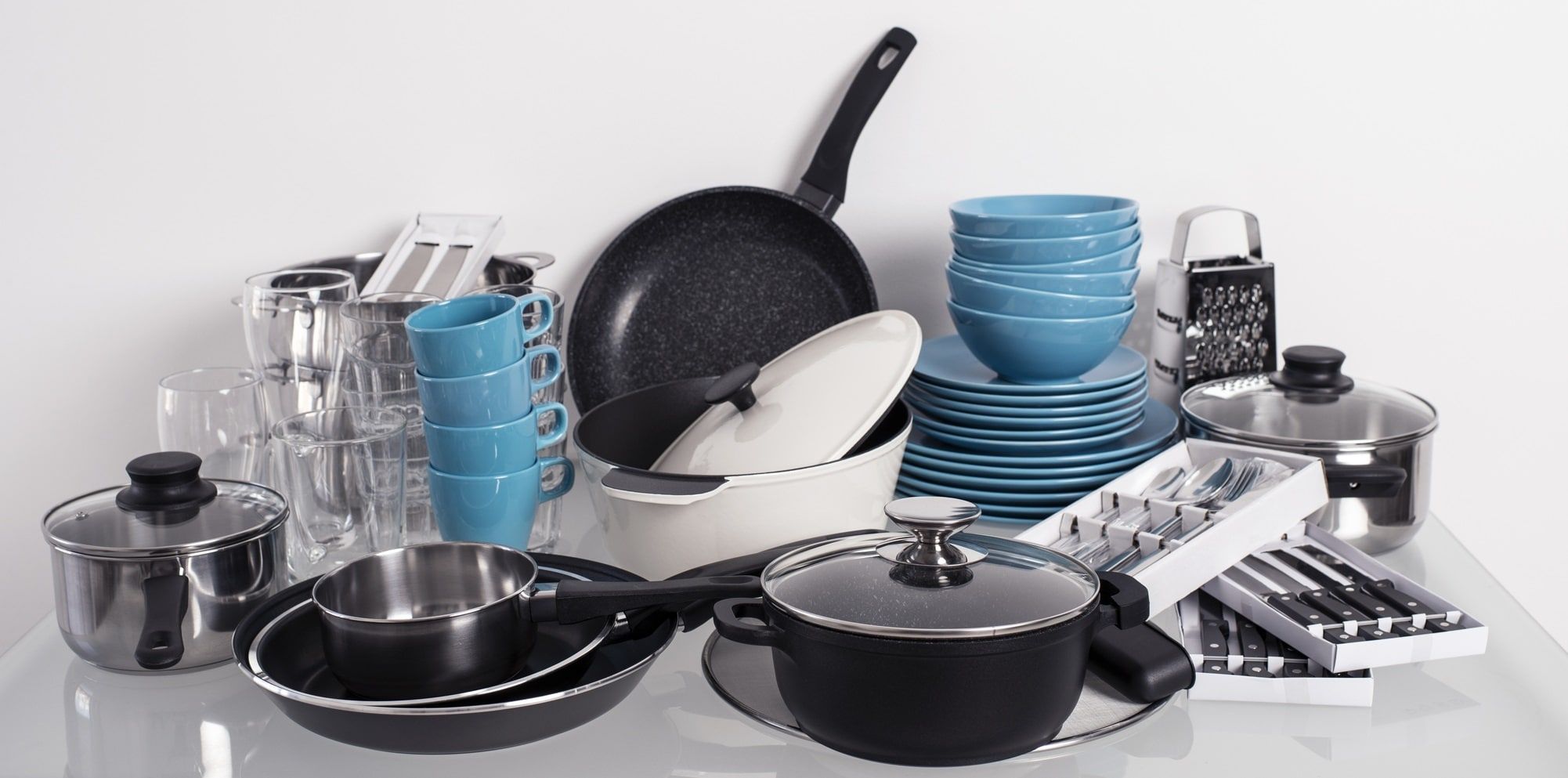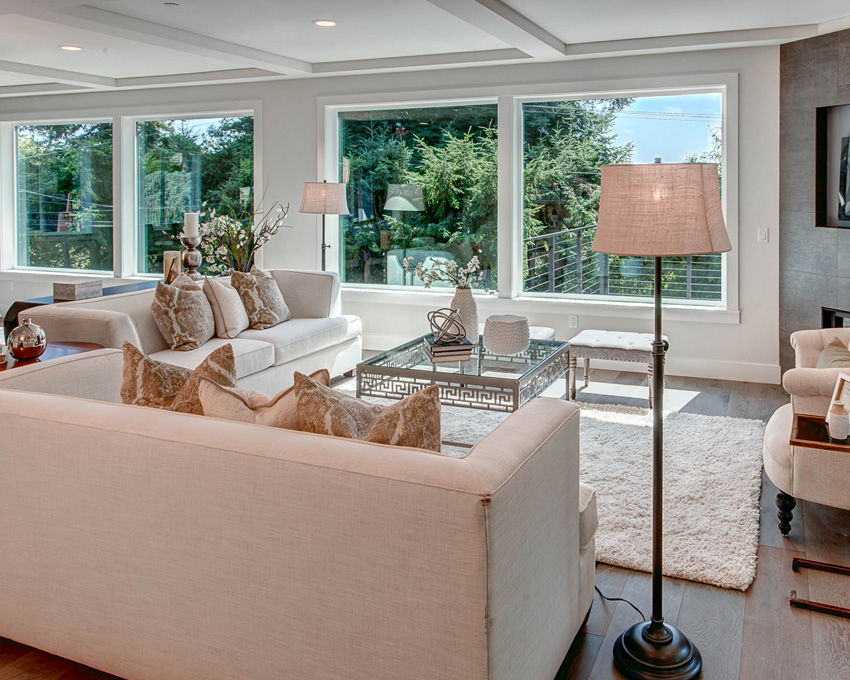Proper ventilation is essential in any kitchen, especially for the cooking and cleaning areas. Without adequate ventilation, smoke, steam, and unpleasant odors can become trapped, making for an uncomfortable and potentially hazardous cooking environment. Install a range hood above your stove to draw out smoke and fumes, and consider adding a window or ventilation fan near your sink for when things get messy.Include proper ventilation for cooking and cleaning areas
The kitchen floor is constantly exposed to foot traffic, spills, and food debris. This is why it's important to choose a flooring material that is easy to clean and can withstand wear and tear. Tiles, vinyl, and laminate are all great options for kitchen floors as they are durable and easy to maintain. Avoid using carpet or hardwood, as they can be difficult to clean and prone to damage from water and stains.Choose easy-to-clean and durable flooring material
Storage space is always a top priority in kitchen design. Make the most of your kitchen's square footage by incorporating cabinets and drawers into your design. These not only provide ample storage for dishes, utensils, and pantry items, but they also help keep your kitchen clutter-free. Opt for deep drawers for larger items and cabinets with adjustable shelves for customizable storage.Maximize storage space with cabinets and drawers
Countertops are essential in any kitchen as they serve as a work surface for food preparation and appliance placement. When designing your kitchen, consider how much countertop space you will need based on your cooking and baking habits. You may also want to consider adding an island or a peninsula for additional countertop space and seating.Consider countertop space for food preparation and appliances
Lighting plays a significant role in both the functionality and ambiance of a kitchen. A well-lit kitchen makes cooking and cleaning tasks easier and safer. It also sets the mood for the space, whether it be bright and energetic or cozy and intimate. Consider a combination of overhead, task, and accent lighting to achieve both functionality and ambiance in your kitchen design.Don't forget about lighting for both functionality and ambiance
A designated space for garbage and recycling bins may not be the most glamorous aspect of kitchen design, but it's an essential one. Instead of leaving your trash and recycling bins out in the open, consider incorporating them into your cabinetry design for a more streamlined look. This also helps keep them out of sight and out of the way while you're cooking and entertaining.Incorporate a designated space for garbage and recycling bins
Electrical outlets are often overlooked in kitchen design, but they are crucial for powering appliances, gadgets, and lighting. Make sure you have enough outlets in convenient locations so that you don't have to rely on extension cords. Consider adding USB outlets for charging devices and placing them in areas where you use these devices the most.Ensure adequate electrical outlets and placement
A kitchen wouldn't be complete without appliances. When choosing appliances for your kitchen, consider both function and style. Select models that not only fit your cooking needs but also complement your design aesthetic. Don't forget to consider energy efficiency and how the appliances will fit into your designated space.Select appropriate appliances for your cooking needs
If your kitchen allows for it, consider adding a designated space for a dining area. This could be a breakfast nook or a formal dining area, depending on your personal preferences and available space. A designated dining area not only adds functionality to your kitchen but also creates a cozy and inviting atmosphere for friends and family to gather.Include a designated space for a dining area
Last but certainly not least, choose a cohesive color scheme and design aesthetic for your kitchen. This will tie all the elements of your kitchen design together and create a harmonious and visually appealing space. Consider the overall style of your home and your personal taste when selecting colors and design elements for your kitchen.Choose a cohesive color scheme and design aesthetic
The Importance of Proper Lighting in Kitchen Design

Enhancing Functionality and Aesthetics
 When it comes to designing your kitchen, there are a lot of things to consider. From choosing the right materials to maximizing space, every detail plays a role in creating a functional and visually appealing space. However, one aspect that is often overlooked but critically important is
lighting
. Proper
lighting
can make or break a kitchen design, impacting both its functionality and aesthetic appeal.
When it comes to designing your kitchen, there are a lot of things to consider. From choosing the right materials to maximizing space, every detail plays a role in creating a functional and visually appealing space. However, one aspect that is often overlooked but critically important is
lighting
. Proper
lighting
can make or break a kitchen design, impacting both its functionality and aesthetic appeal.
Functionality First
 The kitchen is not just a space for cooking, but also for prepping, socializing, and often serving as a multi-purpose area. This means that it requires different types of
lighting
to meet various needs. For example, you may need bright
overhead lighting
for tasks such as chopping vegetables or reading recipes, while softer
ambient lighting
can create a cozy atmosphere for dining or entertaining. It's essential to think about how you will use the space and incorporate different
lighting
sources accordingly.
The kitchen is not just a space for cooking, but also for prepping, socializing, and often serving as a multi-purpose area. This means that it requires different types of
lighting
to meet various needs. For example, you may need bright
overhead lighting
for tasks such as chopping vegetables or reading recipes, while softer
ambient lighting
can create a cozy atmosphere for dining or entertaining. It's essential to think about how you will use the space and incorporate different
lighting
sources accordingly.
Creating the Right Mood
 In addition to functionality,
lighting
also plays a crucial role in setting the mood for your kitchen.
Lighting
fixtures, such as
pendant lights
or
chandeliers
, can add a touch of style and personality to the space, creating a warm and inviting ambiance. On the other hand,
under-cabinet lighting
can add a modern and sleek look, while also providing necessary task
lighting
.
In addition to functionality,
lighting
also plays a crucial role in setting the mood for your kitchen.
Lighting
fixtures, such as
pendant lights
or
chandeliers
, can add a touch of style and personality to the space, creating a warm and inviting ambiance. On the other hand,
under-cabinet lighting
can add a modern and sleek look, while also providing necessary task
lighting
.
Utilize Natural Light
 Don't forget to consider natural light when designing your kitchen.
Natural light
can brighten up your space and make it feel more spacious and airy. Whenever possible, try to incorporate
natural light
by adding windows or skylights. If your kitchen doesn't have access to
natural light
, opt for
light fixtures
that mimic natural light to create a similar effect.
Don't forget to consider natural light when designing your kitchen.
Natural light
can brighten up your space and make it feel more spacious and airy. Whenever possible, try to incorporate
natural light
by adding windows or skylights. If your kitchen doesn't have access to
natural light
, opt for
light fixtures
that mimic natural light to create a similar effect.
The Perfect Balance
 The key to proper
lighting
in kitchen design is finding the right balance between functionality and ambiance. Take the time to strategically plan out your
lighting
sources to ensure that they serve both purposes effectively. By doing so, you can enhance the overall look and feel of your kitchen and make it a highly functional space that you'll love spending time in. Remember,
lighting
is not just an afterthought in kitchen design; it's a key element that can make your kitchen truly stand out.
The key to proper
lighting
in kitchen design is finding the right balance between functionality and ambiance. Take the time to strategically plan out your
lighting
sources to ensure that they serve both purposes effectively. By doing so, you can enhance the overall look and feel of your kitchen and make it a highly functional space that you'll love spending time in. Remember,
lighting
is not just an afterthought in kitchen design; it's a key element that can make your kitchen truly stand out.




























































































